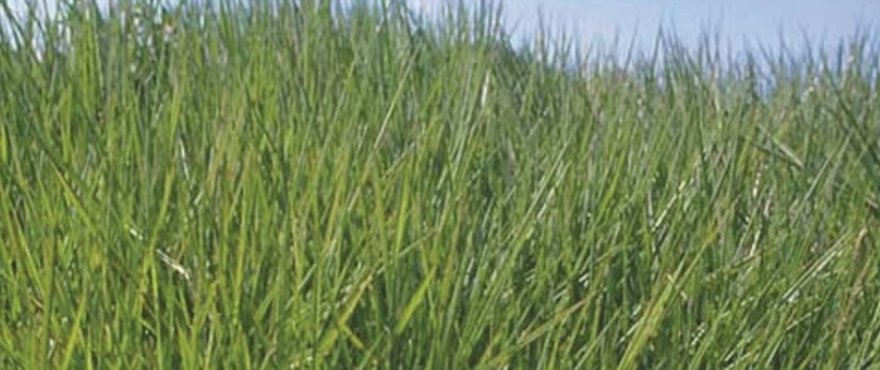Download a copy of the Urochola Sabi Grass factsheet.
Sabi grass is native to Africa (Botswana, Kenya, Malawi, Mozambique, South Africa, Eastern Cape, Free State, Gauteng, KwaZulu-Natal, Limpopo, Mpumalanga, North West Province, Swaziland, Tanzania, Uganda, Zambia and Zimbabwe. Naturalised in the tropics and subtropics in USA (Hawaii, Texas), Australia (north), India, Sri Lanka, Myanmar, Thailand, Indonesia and Fiji. A perennial, loosely tufted grass sometimes rooting and branching from the lower nodes, variable in size and habit, occasionally with stolons, rarely rhizomes. Mostly used for permanent pasture, but makes good hay. It is effective for erosion control and other applications where rapid establishment and good ground cover is advantageous.
Key features
- Palatable, hardy and quick to establish perennial tropical grass
- Well suited to the dry tropics
- Responds well to rainfall and grows in a range of well drained soil types
Establishment
Sabi Grass establishes best on sandy loams but also can tolerate clay loams to red clays. Does not tolerate flooding or waterlogging. This grass can be established by planting stolon pieces or slips, or sowing seed, usually at 3–5 kg/ha. Seed remains dormant for 6–12 months after harvest, due to physical obstruction of the embryo by the enclosing lemma and palea. Germination of fresh seed can be improved by removal of these glumes, this being achieved effectively by hammer-milling e.g. 2,400 rpm using a 4.75 mm mesh screen. Seed can be broadcast onto the surface of a well-prepared seed-bed, or placed to a depth of 2 cm. Seed can also be oversown onto undisturbed pasture, although it may take up to 4 years to achieve a good cover of sown grass. Seedlings develop more rapidly than many other warm season grasses.
Agronomy and management
Sabi grass can tolerate very heavy grazing, stock will selectively graze when young and sill find it more palatable than many other warm season grasses when mature. Sabi grass also recovers well from fire. Sabi grass combines well with legumes, although can dominate in the short term if well fertilized. Good ground cover and rapid seedling development contribute to suppression of annual weeds. Despite growing naturally on soils with low available phosphorus, large responses to applied P have been measured. On very low fertility soils, applications of up to 35 kg/ha P may be necessary to maximise production. A critical P level in the tissue of 0.2% of the DM is proposed. It can also survive on low N soils by virtue of non-symbiotic nitrogen fixation in the rhizosphere . However, it responds well to applied N.
Performance
DM yields vary markedly with rainfall, N and P fertility. Generally, DM yields are in the range of 1–8 t/ha, even with moderate applications of N. Without superphosphate on low P soils, yields can be <0.5 t/ha DM, whereas with applied P, comparable yields of >5 t/ha DM have been measured.
Animal production
Livestock selectively graze Sabi grass when it is young, and still find it more palatable than many other warm-season grasses when mature. When grown in conjunction with Stylosanthes species in the seasonally dry tropics, ‘Nixon’ has produced live-weight gains of the order of 80–360 kg/ha/year, with stocking rate extremes of one beast to 0.4–1.6 ha. Increased production at higher stocking rates reflect increasing legume proportions in the pasture.
Toxicity
No toxicity has been recorded. Pest / disease resistance Sabi grass is not subject to major diseases, and has no major pests. It is a host for a number of viruses, including maize dwarf mosaic virus (MDMV), which also infects zea mays and Pennisetum glaucum, and sugarcane mosaic Potyvirus and barley yellow dwarf Luteovirus.
Suggested sowing rate
Recommended planting rate for AgriCOTE Sabi grass is 3 – 5kg per hectare.
Disclaimer: The information presented in this brochure is from official and other sources and is considered to be reliable. It is provided in good faith and every care has been taken to ensure its accuracy. Barenbrug does not accept any responsibility for the consequences that may arise from the acceptance of recommendations or the suggestions made.



